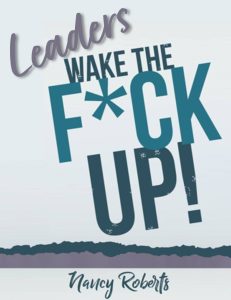 If you’ve ever been in a meeting that seemed to go on forever or where everyone seemed to forget why they were there, you’re not alone.
If you’ve ever been in a meeting that seemed to go on forever or where everyone seemed to forget why they were there, you’re not alone.
Rough estimates tell us that if you’re a middle manager, likely 35-45% of your time is spent in meetings. Move up the ranks to the executive level and it can be a whopping 50-60%. Yet 67% of managers consider meetings to be a waste of time, according to a study cited in www.digitalsynopsis.com.
Think about that for a minute…Almost half your work week spent on an activity that the majority of people consider a waste.
Since eliminating meetings altogether sounds about as plausible as “the paperless office” we were promised so many years ago, it makes sense to figure out how to make them as effective and efficient as possible.
THE MOST EFFECTIVE MEETING
The most effective meeting is the one that didn’t happen. When considering the effectiveness of a meeting, we first have to consider is it even necessary?
If you apply the Pareto Principle (the 80/20 rule) to meetings, it would indicate that 80% of our results most likely come from 20% of our meetings. What 80% of your meetings could you eliminate if you had to?
Once you are sure a meeting is absolutely essential, it should have the criteria below very clearly defined.
Each meeting held should have clearly defined:
I. WHY – The Meeting Objective. What is the intention of this meeting? Why are we holding it now? What is the goal and outcome we want to achieve? Too many meetings meander aimlessly with no one really knowing what they are trying to accomplish. Here’s a tip: If you can’t clearly define the reason for the meeting, consider not having it.
II. WHAT – The Meeting Agenda. A meeting without an agenda is like a trip without a map (or GPS nowadays!). Once an objective is set (your destination), an agenda is simply the steps you need to take to get to your objective without going off track.
III. HOW – The Meeting Format. Different meetings require different formats based on their objective. Is this an informational meeting where one person is doing the reporting? Is part of the intended outcome team cohesion? If so, everyone should participate. Is the meeting formal? Informal? Predictable format (same every week) or loose format based on what’s needed? Lastly, how often will this meeting take place?
IV. WHO – The Expected Attendee Profile. One of the main reasons meetings are seen as a waste of time is there are people who are invited who don’t need to attend. If there are several people who aren’t talking in a meeting, we should ask “Do they really need to be here?” If the government can classify a group of workers as “nonessential,” surely we should be able to as well when it comes to meeting attendees.
SIX (6) TYPES OF MEETINGS YOU SHOULD BE HAVING
The type of meeting you are having determines the Why, What, How and Who. And while there are many types of meetings you can hold, there are several meetings that I have found in my work with companies in non-glamorous industries that are essential but often neglected.
So our list for the purposes of this article is going to contain the MOST COMMON (MC) and the MOST NEEDED (MN) meetings.
1) Vision/Mission Meetings (MN)
2) Strategic Planning Meetings (MN)
3) Status-Update Meetings (MC)
4) One-on-One Meetings (MN)
5) Problem-Solving Meetings (MC)
6) Decision-Making Meetings (MC)
Over the next few articles, there is an overview of how to effectively conduct each of these meetings.
~ The DISC Wizard





